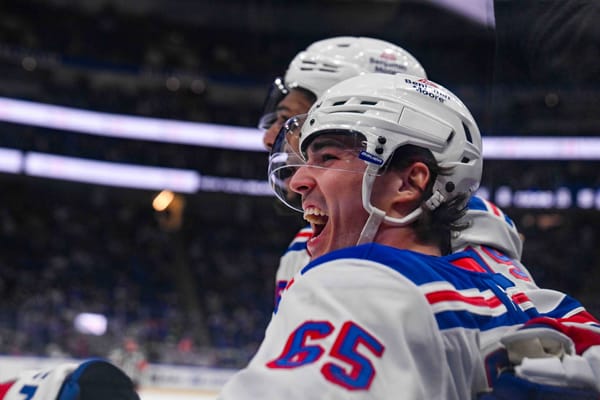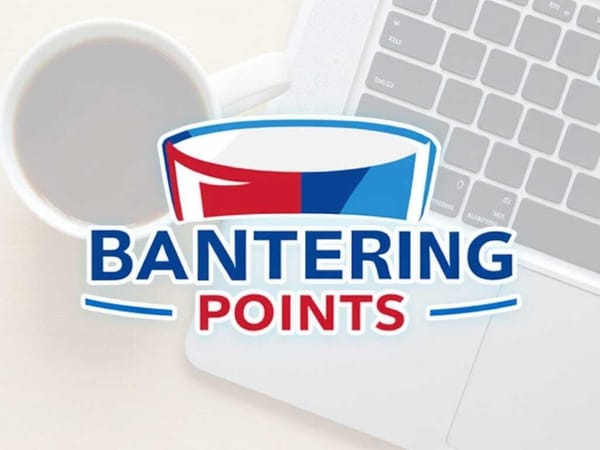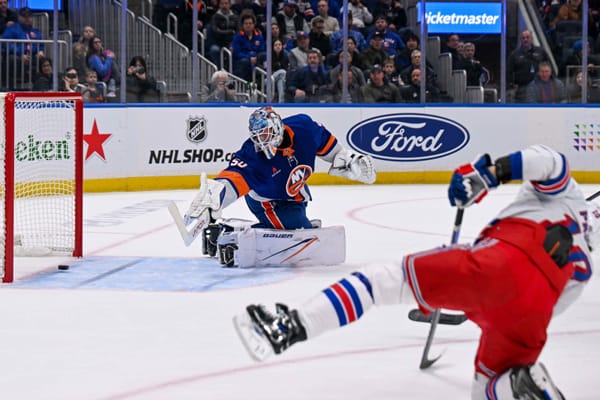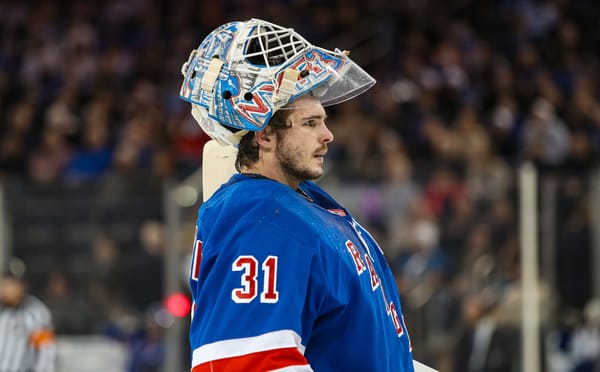The Rangers Aren’t Good Enough To Let Players Walk For Nothing
Before we get into the reasoning and the examples, before we walk down the road of the why and why not, let’s get one thing out of the way now:
The Rangers are not a playoff team. If the 7-2 drubbing by the Pittsburgh Penguins last night didn’t prove it to you, well I’m not sure why you needed THAT result to prove it to you anyway.
Not a single team have less than their 12 ROW (regulation and overtime wins), and the advanced metrics paint a similar story of struggles that are somewhat masked by a few forwards and a single Henrik Lundqvist.
#NYR splits (5v5, adjusted):
— Rob Luker (@RLuker12) January 2, 2019
Games 1-15: 47.12 CF%, 49.81 xGF%
Games 16-38: 43.99 CF%, 45.87 xGF%
Forward injuries did not help, but I think the real story is the Defense. Shattenkirk and Claesson start seeing less TOI, while Staal-Pionk see more, along with Skjei.
In terms of raw standings, the Rangers hold 41 points in 39 games, six points behind Montreal for the final Wild Card spot (the Rangers have one game in hand) and nine points behind Pittsburgh for the final Metro playoff spot (the Rangers have one game in hand).
What I’m showing you, in very broad strokes, is that if the Rangers somehow stumble into the playoffs thanks to the incompetence of their division or conference, they are not able to hang with the elites, or even good-enoughs that would make them contenders. On the podcast this week (ep. 121) Mike and I spoke briefly about how surprising it is to see a few teams not in playoff contention on the Rangers’ side of the division, and that it’s given the illusion that the team is closer or better than they really are. But, again, they’re not good. They are quite literally bad. And they could even be hellabad.
And since they are not contenders, Jeff Gorton has to play by a specific and rigid series of rules. The biggest of which is not wasting assets. Any assets.
Lately it’s been the debate over whether or not the Rangers should trade or re-sign Kevin Hayes, but the truest example of what is sitting on Jeff Gorton’s plate in this regard comes in the form of Chris Kreider. Kreider, who is 27, will be a UFA in 2020, needing a new contract extension — and likely the final big one of his career — that will kick in after his 29th birthday. For a guy who currently has a 20-11-31 line in 39 games (on pace to finish with 42 goals and 23 assists on an 82-game ratio) he’d be wise to ask for a lot of money when he gets to the negotiating table in two years. Especially when he’s having a season like this:
I think Pettersson's a fantastic shooter. But he's also 14 goals above expectation right now, which is a greater goals vs expectation difference than anyone else in hockey. Is he /the best/ shooter in the game?
— Sean Tierney (@ChartingHockey) January 3, 2019
Right now, who cares -- he's electric and so fun. pic.twitter.com/H7l7bKUM9g
The original discussion revolved around Kreider’s leadership, intangibles, and also the things he actually brings to, you know, the ice. He’s a speed demon, a big body, a fantastic hockey player who is finally realizing the potential we’ve seen in him since his days in Boston College. It is not impossible for a player to break out at 27-years-old, but it is unlikely said breakout will survive through the player’s early 30’s, which is why extending Kreider always felt like a sticky situation to me. On one hand he’s both good in the room and unquestionably good on the ice. On the other hand, how much of that new contract (even if it’s a hometown discount of five years — which would be unlikely) is money spent on a player who could lose his effectiveness when Father Time takes his first step away?
There isn’t a right answer. Kreider could still be a 25-goal guy through his mid 30’s. Or, like Milan Lucic, he could see his production dwindle to the “how much longer is his contract” phase almost right away (although the comparison is not apples to apples, just a dramatic example of a guy falling off a cliff).
No there isn’t a right answer. But there is a safe answer, and there is a wrong answer.
The safe answer is to trade him, even this year. Use his hot-start/career-high pace to sell high. Kreider would be an instant boon to any contender, is on a contract so friendly it feels like an NHL 19 deal, and if he’s traded this year the acquiring team gets another full year with the friendly contract. For any contender, or even close-enough-to-think-about-it contender, Kreider is a player worth the haul that it would cost to get him. Sure you’re losing Kreider if you’re the Rangers, but presumably you’re bringing in assets to help further the rebuild along, and that’s important too. Contractually he’s in the same spot Ryan McDonagh was in, and Kreider’s trade value may never be higher.
The wrong answer is to let Kreider play out his deal and walk. There is zero value in that. None. Unless you think the Rangers are going to become Stanley Cup contenders over the summer — and Artemi Panarin is great, but not great enough to do that on his own. Contending teams get to make that choice. Playoff teams that hope they are contenders might even get to defend that choice. Rebuilding teams? They don’t get to make that choice? Gorton? Does not get to make that choice.
Kreider has no value as a walkaway to this organization. If you want to argue that he should be kept, fine, but re-signing him or trading him are the only two options that should be around. Even if the plan is to bring in Panarin to start shoring up the team as a playoff group, Kreider playing next year and walking for nothing is a foolish road.
I understand the argument that trading Kreider while signing a win-now piece in Panarin is seemingly at odds with one another. And it would be if Kreider was locked up long term. Panarin is an instant upgrade over any skater on the Rangers, and the return for Kreider could be used to help re-enforce the youth and make the team better for longer. The Rangers are not going to return to prominence by playing the waiting game with their prospects, and eventually they need to dip back into the free agent or trade pool. The key for a successful rebuild would see Chytil and company blossom and become faces of the franchise, but it needs to be a steady process. Adding an elite talent like Panarin would be a good next step in the rebuild.
Kreider is a fantastic asset for the Rangers and makes the team better, but who is to say that the value he would bring the team back in terms of assets wouldn’t be the same? And, as always, how long will that value last when he reached his 30’s?
There should be some unease about the current stance of “trade everything that isn’t nailed to the floor,” but it’s an uncomfortable reality about rebuilding teams. Assets are the only thing the Rangers have to build off of, and letting valuable property go for nothing does nothing to help.
Guys like Pavel Buchnevich, Brady Skjei, Brett Howden. Filip Chytil, Lias Andersson, and Mika Zibanejad will be around next year regardless. Vitali Kravtsov may join them, and in two years we might even see K’Andre Miller. Aside from Andersson and Libor Hajek, the Rangers have no true (potential) impact NHL talent in Hartford. In their prospect pool (non-NHL edition) it’s Kravtsov, Miller, Andersson, Hajek, Nils Lundkvist probably in that order in terms of ceiling. That’s a pretty barren pipeline regardless of how high you might feel about any or all of those five players.
So, yes, it’s uncomfortable to trade everything not nailed down. Yes, it’s greedy to say “OK you’re not signed long term so a decision needs to be made right now about your future to this team,” yes, an outlook of “what can you do for me tomorrow” may seem unnecessarily ruthless. But that’s the life of a rebuilding team.
No asset can go to waste.
Which means no player can play out their deal and walk.





